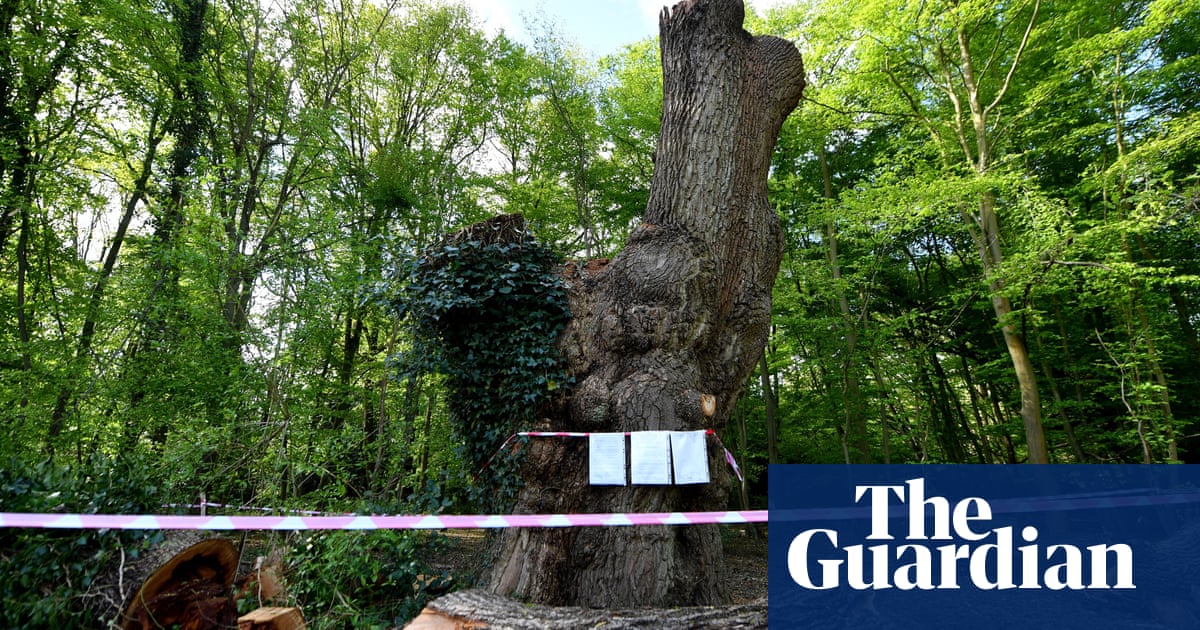In 1942, the British government’s Board of Trade launched a Make Do and Mend scheme. It was one of several campaigns encouraging the public to save resources during the second world war by learning basic sewing skills alongside taking on bigger projects such as remodelling men’s clothing into womenswear. Today, Fashion Revolution, a non-profit social enterprise founded in the wake of the 2013 Rana Plaza factory disaster in Bangladesh, is gearing up to launch its own Mend in Public Day. This weekend participants from all over the world will be able to join free local community classes to learn how to mend and stitch.
However, this scheme is aimed at addressing not scarcity, but overconsumption.
Cheap prices and a fast-paced trends cycle has made fashion the most polluting industry after oil and gas, causing 10% of global carbon emissions. Microfibres from synthetic clothing are found in food chains, while in 2023 a photo taken from space of a mountain of clothes in Chile’s Atacama Desert went viral. We live in an era of social media clothing hauls and a “wear once, then toss” mentality. It’s often cheaper to buy a replacement of a stained item than it is to get it dry cleaned, and the same is true for rips and tears. Even the threat of tariffs on fast-fashion giants such as Shein and Temu is unlikely to significantly deter garment gluttony – their prices are so low (Temu once sold boots for $0) that they will still be deemed cheap with higher duties added.

Fashion Revolution describes the scheme as a protest. “In an age of throwaway fashion, repairing our clothes is a revolutionary act,” they say. “While the fashion industry operates on a global scale, its impacts and required solutions can vary by region, calling for localised action.” But this collective action is not just about repairs. They are also encouraging upcycling – reusing existing garments or discarded materials to transform them into new products. Luxury designers such as Ahluwalia, whose knitted ribbed tops made from deadstock fabrics have been worn by celebrities such as Doechii, and the French designer Marine Serre, who transforms old terry cloths and silk scarves into dresses and jackets, are proof that upcycling is cool not crusty.
Many smaller independent UK brands are driving the change. World Secrets makes clogs using antique kilim rugs, while Helen Kirkum sources secondhand trainers from charity retailers and then deconstructs and remakes them into shiny new versions. Then there’s Pikol Clothing, which crafts White Lotus-esque holiday shirts from vintage tablecloths, and Spilt Milk, which makes everything from fisherman vests to bishop-sleeved blouses from pretty vintage textiles.
For those who are staring at moth-eaten cashmere jumpers (’tis the season) or party dresses with ripped hems, a newly launched upcycling app, Loom, is hoping to be part of the solution. The platform lets you upload a photo of your damaged or unworn item then connects with you designers offering everything from visible mending to dyeing and redesign.
In a world where fashion trends take off then burn out within days, repairing and reworking something you love could just be the ultimate act of defiance.
after newsletter promotion
To read the complete version of this newsletter – complete with this week’s trending topics in The Measure and your wardrobe dilemmas solved – subscribe to receive Fashion Statement in your inbox every Thursday.

.png) 4 hours ago
4
4 hours ago
4













































